Interference from Plasma Televisions

Interference from plasma screens, as heard on a radio covering 1 to 30MHz, varies from a buzz (at low frequencies) to a white-noise (at higher frequencies) which exhibits peaks and troughs as you tune across the frequency range. If you happen to live near a plasma television, this is the sort noise you can expect to hear:
Plasma TV interference recorded on 3.449MHz
The interference is only present when the screen is operational. As people watch a lot of television, this may require you stay up really late in order to enjoy your radio.
Affected services
The following are known to be affected by plasma television interference:
| Service | Frequencies affected |
|---|---|
| High frequency services, inc. long range marine & airband, Shortwave broadcasts, Amateur radio allocations, Citizens' Band radio, plus wireless devices operating on 27MHz | 3 - 30 MHz |
| Long wave & Medium wave broadcast, plus some Shortwave services. | 100kHz - 3MHz |
Manufacturers
LG, Panasonic and Samsung are the only remaining manufactures of plasma panels, and all panels from these three have been detected as causing problems - some even from new! We do not have a great deal of information on the cause of the interference problem as the national regulators and television manufacturers are keeping tight-lipped about their problems.
Radiated Emissions
Until recently, radiated emissions were only checked from 30MHz and above. It was thought the wavelength of the associated frequencies was too long (a quarter-wave at 28MHz is around 2.5 metres) to allow for any part of the device to act as an aerial and radiate. This assumption has been proven to be incorrect with flat-panel televisions. A new proposal: IEC/PAS 62825: Methods of measurement and limits for radiated disturbances from plasma display panel TVs in the frequency range 150 kHz to 30 MHz is currently working through the approvals process. Once in force, all new plasma televisions will have to meet the radiated emissions regiments at lower frequencies.
Cure?
Installation of ferrite suppressors, either in ring form, or as clamp-on varieties, to all of the cables connected to the television (as close to the set as possible) may cure the issues of conducted emissions (if this is the cause), but they will not cure any radiated emissions. The only complete method to avoid interference is to replace the plasma television with an LCD model.
Pretty Pictures
We are grateful to Norwegian Radio Amateur, Roar Dehli LA4AMA, for capturing the following Spectrum Analyser and SDR screen-shots demonstrating the difference in his reception when a nearby plasma television is operating.
1.5 to 2.0 MHz - Plasma OFF
A Spectrum Analyser screen-shot with the plasma television switched off.
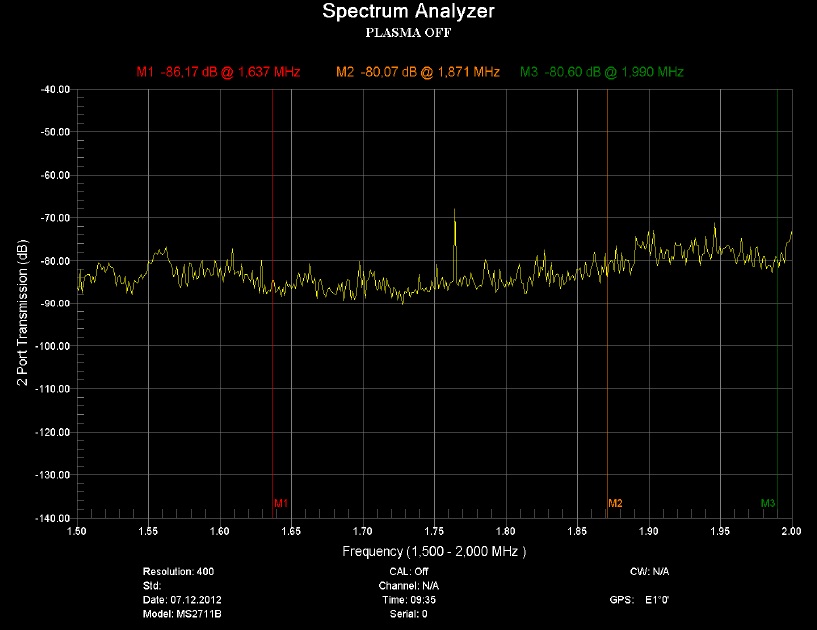
© Roar Dehli - Used with permission | Click the image for a larger view.
1.5 to 2.0 MHz - Plasma ON
A Spectrum Analyser screen-shot with the plasma television switched on. Note the drastic increase in noise!
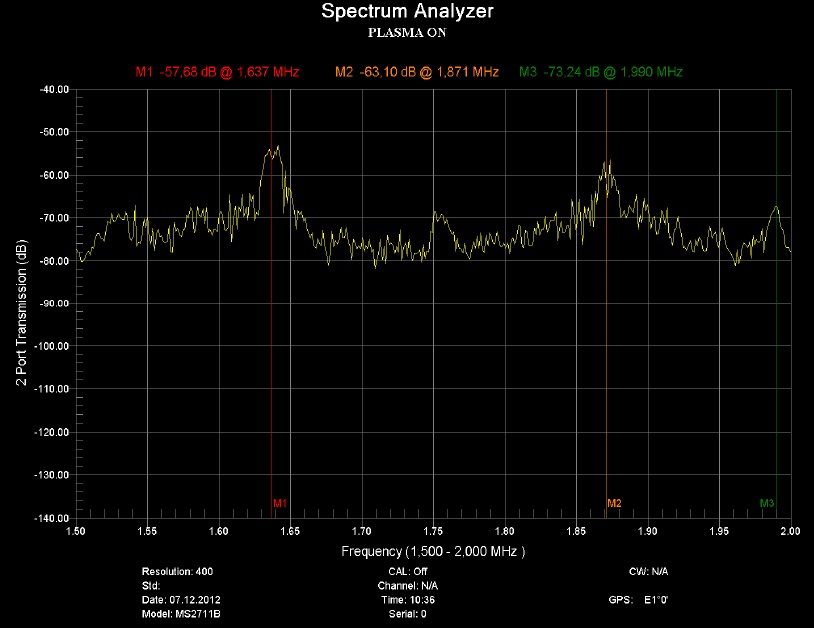
© Roar Dehli - Used with permission | Click the image for a larger view.
3.5 to 3.8 MHz - Plasma OFF
A Spectrum Analyser screen-shot with the plasma television switched off. You can see a couple of Radio Amateur transmissions in the 80 metre band.
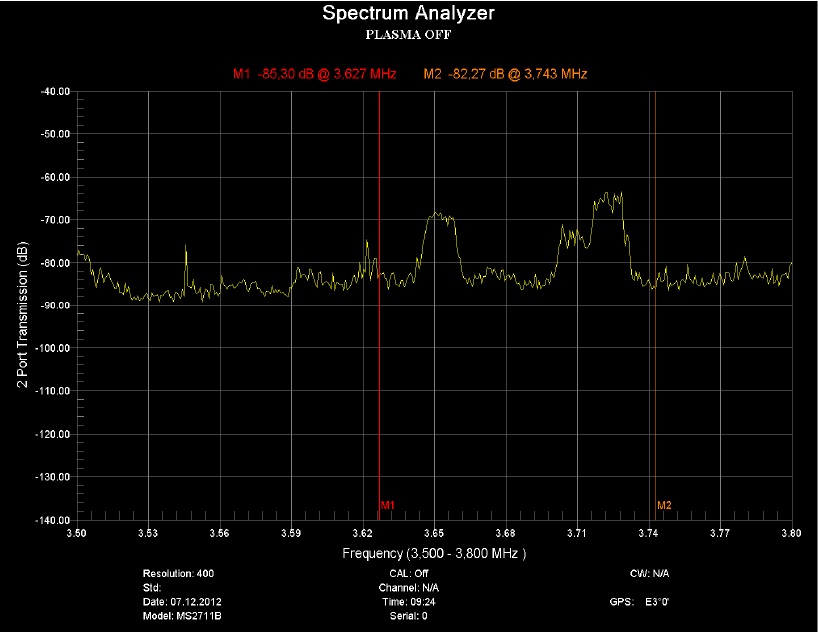
© Roar Dehli - Used with permission | Click the image for a larger view.
3.72 to 3.76 MHz - Plasma ON
A Spectrum Analyser screen-shot with the plasma television switched on. The 80 metre is wiped out by a drastic increase in noise!
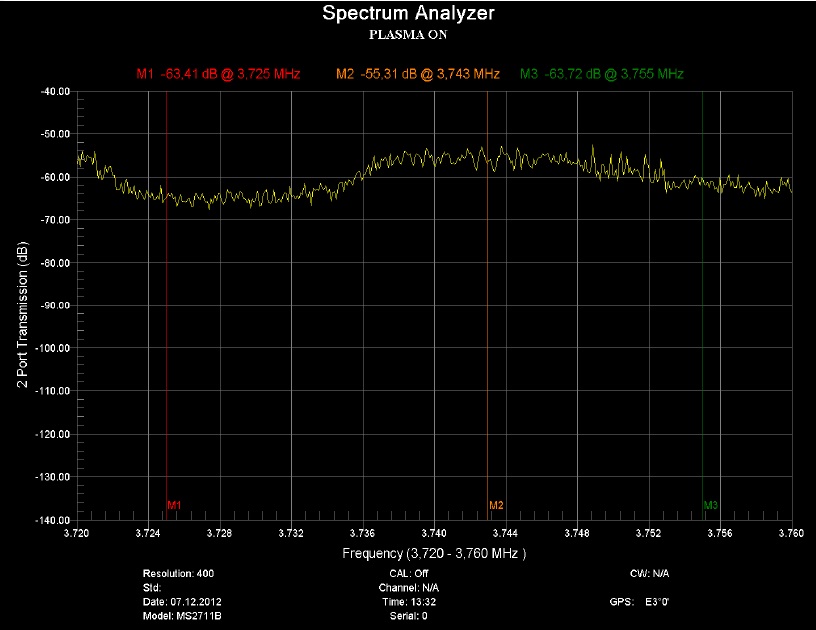
© Roar Dehli - Used with permission | Click the image for a larger view.
Software Defined Radio
A Software Defined Radio screen-shot from Roar's computer showing a broadcast station in the medium-wave band. The plasma television is currently switched off.
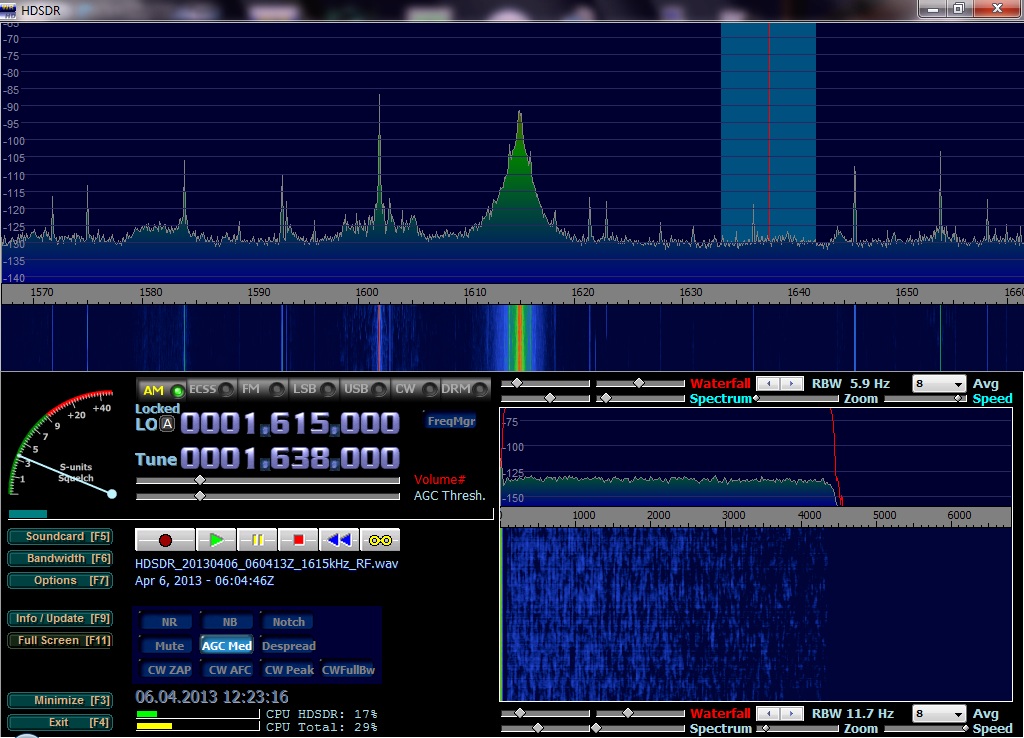
© Roar Dehli - Used with permission | Click the image for a larger view.
A Software Defined Radio screen-shot from Roar's computer showing a broadcast station in the medium-wave band. The plasma television is clearly switched on!
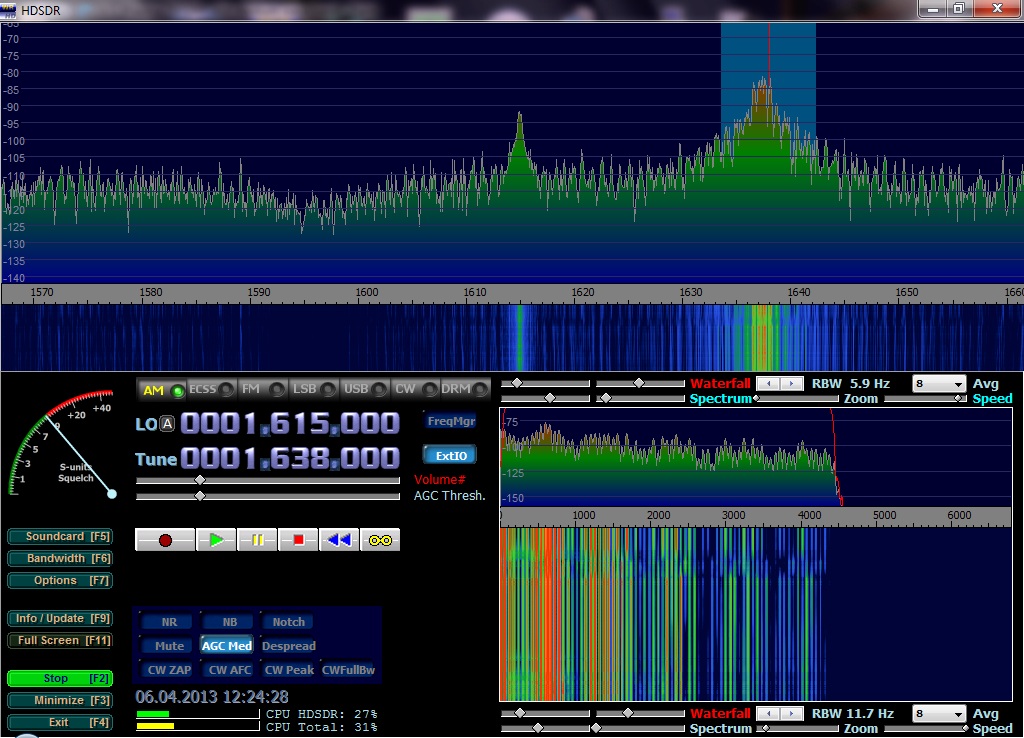
© Roar Dehli - Used with permission | Click the image for a larger view.
A couple of videos from Roar demonstrating the effects of a plasma television on radio reception.
A video from Oxford Shortwave Log demonstrating an in-house plasma TV causing severe interference.
Page updated: 15th August 2021
Home | News | Legislation | Lighting | SMPS | Plasma | PLT | VDSL | Miscellaneous | Finding QRM | Your Story | Glossary | Contact your MP | Contact Us
